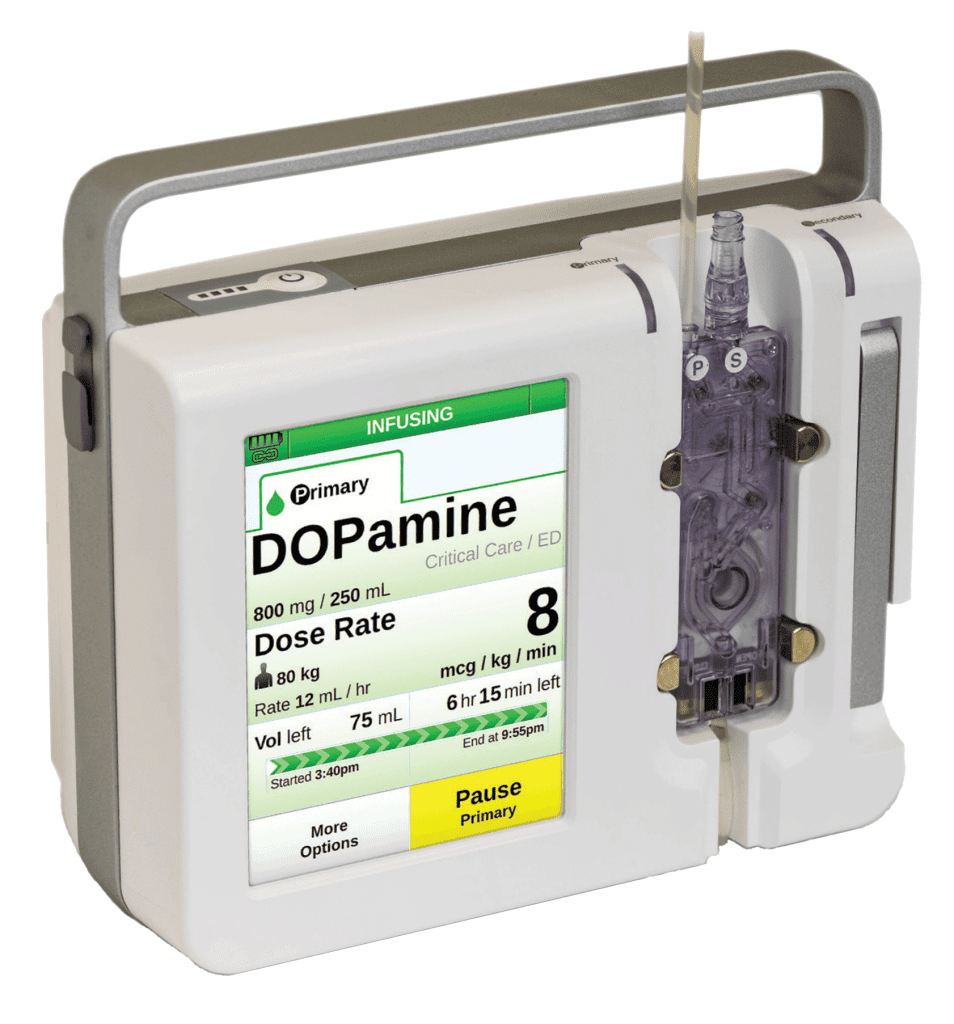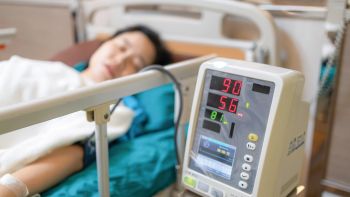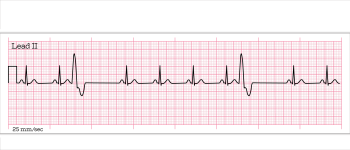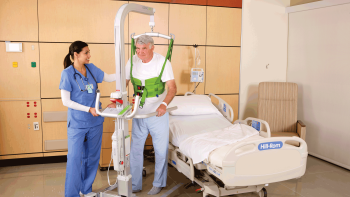Safety and usability direct next-generation smart pump innovations.
Nurses look to technology to help solve problems, and they recognize that addressing smart pump technology can help solve ongoing issues related to I.V. medication safety. According to Penoyer and colleagues, an estimated 90% of critical and acute care patients receive I.V. medications through smart infusion pumps, making these systems essential for administering medications, fluids, and blood products. In the United States, healthcare organizations use two types of large-volume I.V. smart pump technologies: peristaltic, head-height differential (traditional or legacy systems), and pneumatic-driven (next generation or advanced technology systems).
Understanding recent technological advances of next-generation smart pumps can increase patient safety and optimize efficiencies in patient care delivery.
Smart pump history
When asked, “What makes a smart pump smart?” Susan Niemeier, MHA, BSN, RN, explains, “The addition of a drug library using dose error reduction software (DERS) essentially makes a pump smart.” Niemeier is vice-president of product strategy and clinical excellence at Fresenius Kabi in North Andover, Massachusetts and was named among the Top 25 Women Leaders in Medical Devices for 2022 by Healthcare Technology Report.
Smart infusion pumps with drug libraries and DERS first emerged in 1996 and quickly became the standard of care to reduce infusion-related medication errors. For patients, these errors can result in grave outcomes, including over- or underdosing that alters the therapeutic effect, therapy disruption, debilitating injury, or death.
Initially, smart pumps reduced the incidence of adverse I.V. drug events and medication administration errors. However, according to Vanderveen, Maddox and colleagues, and Kaushal and colleagues, smart pumps continue to be associated with 54% of all adverse drug events, 56% of medications errors, and 61% of serious and life-threatening errors.
Niemeier says that literature reviews show that using smart pumps with DERS reduces errors but hasn’t eliminated them. “Serious and frequent errors continue to occur, most commonly with programming,” she says. “Examples of programming errors include bypassing DERS because it’s too complex and time intensive.”
Although smart pumps continued to be part of the infusion-related medication error issue, the issue was underrated. After coming onto the healthcare scene in the late 1990s, smart pump innovation stalled as manufacturers failed to substantially upgrade their basic design. For the next two decades, a lag in smart pump technology contributed to nurse cognitive load in several ways, the most obvious of which was complex programming and failure to address the ongoing I.V. medication safety issue.
Challenging the status quo
Nurses circulate their attention daily among various patient care tasks while simultaneously administering numerous potent I.V. medications using smart pumps. Instead of eliminating infusion-related medication errors, the tedious programming and setup tasks of traditional pumps played a key role in errors and nurse cognitive burden.
“Lagging technology and acceptance of the status quo has gone on too long,” Niemeier says. “The numbers [of I.V. medication errors] aren’t only frightening—they’re unacceptable.”
Within the past 5 years, however, some smart pump manufacturers have investigated the issues contributing to infusion-related medication errors, responding with technologically advanced smart pumps designed to address the complexities of infusion setup, the burden of programming, the challenges of integration, and the inconsistencies of fluid delivery.
According to Niemeier, recent studies have compared the safety and usability of peristaltic and pneumatic large-volume I.V. smart pumps. She notes that one crucial study evaluated pumps in real-world clinical use, comparing new technology to the market leader (legacy systems). Results showed 0% compliance with setup requirements for the legacy systems and 100% compliance with new technology. Users’ experiences with the new technology pumps included faster setup and programming times, no errors when interrupted, and better compliance with pharmacy-configured safety settings, such as DERS.
In 2020, the Institute for Safe Medication Practices (ISMP) revised its guidelines for institutions using I.V. smart pumps to include the following:
- All I.V. medications should be administered through programmable smart pumps using DERS.
- Institutions using I.V. smart pumps should plan for bi-directional (auto-programming and auto-documentation) interoperability with the electronic health record (EHR).
With these crucial recommendations leading the way, I.V. smart pump innovation is no longer optional, it’s necessary. (See Definitions.)
Definitions
Auto-documentation: The ability of the smart pump to transfer infusion-related data to the electronic health record (EHR).
Auto-programming: The ability of the EHR to transfer medication orders and infusion parameter details directly to the smart pump.
Interoperability: Unique, two-way communication that allows smart pumps and EHRs to continuously exchange and use data in real time. Interoperability can be a more reliable data source to help healthcare organizations recognize and rectify medication errors.
Addressing reported issues
Although most smart pumps didn’t evolve to address their contributions to I.V. medication errors, it became necessary to do so. Seeking to understand pain points and causes for errors from those with firsthand experience, smart pump manufacturers spoke with nurses, pharmacists, information technology and biomedical personnel, safety officers, and even industry watchdogs such as ISMP, ECRI, and The Association for the Advancement of Medical Instrumentation. To address reported issues, manufacturers began revamping programming interfaces to be more intuitive and easier to set up. They also responded to the issue of accurate flow rates (regardless of pump position) and addressed pump size, durability, and nuisance alarms. By starting from the ground up, they made the complex simple.
Programming and set up
Infusion programming becomes prolonged and problematic when the nurse is overburdened with multiple choices, must understand the pump’s mechanics, and isn’t guided through safe and efficient data entry. Intuitive next-generation smart pump interfaces (some mimic a smartphone interface) guide users through safe and accurate programming, reducing the time needed and limiting the chances for interruptions—when most mistakes happen. When an interruption does occur, advanced smart pumps allow nurses to easily pick up where they left off, actively guiding them through the workflow, improving the clinical use experience, and resulting in fewer opportunities for error.
Advanced smart pump technology eliminates static buttons requiring nurses to “arrow up or down” through a maze of options irrelevant to the workflow and doesn’t rely on annoying pop-up reminders. Compared to legacy pumps, next-generation technology leverages an intuitive full-color touchscreen keypad and provides a significantly faster programming time.
Upgrading smart pump programming isn’t only about ease of use, it’s about patient safety. A study by Penoyer and colleagues comparing traditional smart pumps with advanced smart pumps found less programming time meant users had fewer deviations from safe practices. For example, less bypassing of safety software such as drug libraries. “During programming, advanced smart pump systems identify incompatible drugs or duplicate medications and provide real-time feedback for dose guidance regarding drug library compliance,” Niemeier says.
Larger and easier-to-see screens, especially from a distance, ease programming. Screen readability allows providers to deliver quiet, convenient patient care, and bright screens permit simple, quick assessment without patient disruption. Most advanced systems can work with a single remote clinical viewer that lets clinicians manage multiple patients by viewing infusion statuses and alarm support outside of patient rooms.
Traditional smart pumps require substantial focus on physical setup and operating the user interface. For example, multiple setup steps are required to ensure accurate secondary medication delivery. Typically, secondary bags are hung 20″ to 24″ above the primary bag, and the smart pump itself must be aligned with the patient or bed, depending on manufacturer recommendations. All these steps present opportunities for multiple errors, which can allow delivery of drugs or fluids at uncontrolled or incorrect rates, unnoticed by the pump or the nurse.
Advanced smart pump technology delivers infusions accurately and consistently throughout all clinical conditions. Because the system doesn’t rely on gravity, the flow rate doesn’t depend on bag height, backpressure, or fluid viscosity. A bag hanger isn’t required for secondary infusions, and the pumps automatically switch to primary infusion after the secondary is completed. In addition, the dedicated administration set simplifies priming and loading of the tubing while also preventing pump misloading.
Most infusion therapy administration errors result from improper configuration of infusion sources (bags, bottles, and syringes) and tubing lines, workflow mistakes, and other failures to comply with the manufacturer’s safety recommendations. Next-generation pumps reduce these errors and the workflow burden.
Size and weight
Traditional I.V. pumps are bulky and heavy, making their use in a complex critical care environment challenging. For example, most post-op cardiac ICU patients require numerous pumps delivering vasopressors, muscle relaxants, anticoagulants, antiarrhythmics, fluids, or blood. The total weight of multiple traditional pumps frequently exceeds the allowable weight of an I.V. pole. Compact and lightweight next-generation smart pumps eliminate that concern.
Nuisance alarms
Innovative infusion pump technology reduces the number of alarms, which supports many hospital initiatives to decrease noise and promote patient healing.
“Features that drive down nuisance alarms, and thus noise, include automatic restoration of flow when I.V. tubing is temporarily kinked, a long battery life when disconnected from power, configurable air bubble detection and occlusion pressure for specific care areas, and elimination of beeps and chirps when transitioning infusion states,” Niemeier says. Advanced technology also permits alarm distribution outside the patient room through an alarm management system that directs it to a team responsible for managing the alarms.
Durability
The doors, latches, and other means of loading tubing into traditional pumps lead to fatigue and failure, which impact device safety. Advanced infusion pumps don’t require a door or complex loading system. All smart pumps must endure consistent exposure to harsh disinfectants, but advanced smart pumps have chemical-resistant housing materials to prevent premature wear or accidental breakage.
Benefits of interoperability
Advanced infusion pump technologies address clinician efficiency and help improve I.V. medication safety, but lack of interoperability can contribute to critical medication safety issues. Unfortunately, many healthcare organizations wait until current pump contracts expire or pump fleets age out to investigate new infusion pumps. As a result, these organizations miss opportunities to improve clinical outcomes, medication delivery processes, and, ultimately, patient safety.
Some U.S. healthcare systems have implemented the technologies required for smart pump interoperability, such as electronic health records (EHR), barcode medication administration (BCMA), and computerized prescriber order entry, but few could integrate these systems with traditional smart pumps to achieve interoperability.
“According to KLAS Research, most hospitals have not regretted adopting interoperability, nor do they have plans to remove it,” Niemeier says. “Most organizations recommend the advanced technology, noting its overarching benefits of improved patient safety and enhanced efficiency.” Research by Kirkendall and colleagues shows that when organizations optimize advanced technology (such as next-generation smart pumps and barcoding technology), promote consistency of smart pump drug libraries, provide clinician training and education, standardize smart pumps across institutions, and interface smart pumps with EHRs, medication errors decrease.
Typically, the interoperability of the device ecosystem within an organization is facility-specific and depends on several factors, such as robust wireless support and synchronization of the drug library with the hospital’s formulary. Advanced smart pump interoperability is a reliable data source for rectifying and recognizing medication errors.
Interoperability requires technologies that can “listen” and “talk” to each other wirelessly. Even though smart pumps, BCMA, and EHR systems are created separately, next-generation smart pumps support seamless data integration with these siloed information technologies. Auto-programming and auto-documentation with the EHR and BCMA reduce manual steps, optimize documentation, reduce medication errors, allow more accurate capture of patient information, and increase facility revenue.
Auto-programming
Smart pump auto-programming features reduce manual programming errors and increase DERS compliance by allowing for wireless data transfer from smart pump to EHR. These advanced pumps allow for automatic drug library opt-in and real-time dose guidance, which increases drug-library compliance, thereby closing the medication administration loop. This reduces the risk of a pump being incorrectly programmed manually.
Data transfer begins when the nurse scans the medication barcode. This pre-populates infusion parameters into the advanced smart pump where the clinician can verify it manually. Auto-programming uses barcodes on the fluid containers and pump channels to associate with the patient, thereby reducing manual keystrokes for all I.V. administrations by almost 86%, according to ISMP and Biltoft and Finneman.
Auto-documentation
Auto-documentation features allow more accurate documentation within the EHR. Advanced smart pumps communicate with the EHR to establish which drug was administered at what time. Information sent to the medical record about precise medication start and stop times helps document medication waste. Overall, this back-and-forth process improves charge capture (ensuring precise billing), reduces nurse’s documentation time and the potential for transcription or omission errors, and provides time-stamped infusion data that can be shared with the EHR in real-time.
Successful integration
Although traditional smart pumps predominate in U.S. healthcare systems, new smart pump technologies can provide superior ease of use with the potential to eliminate I.V. infusion medication errors. Real-world studies have shown that smartphone-like touchscreens simplify workflow programming, which limits interruptions and nurse cognitive load. Research endorses integrating advanced smart pumps to reduce I.V. medication errors, but few manufacturers have prioritized these innovations.
Adopting interoperable smart pumps should be simpler and less burdensome to nurses and their organizations. Advanced smart pump technology can help shorten adoption times and reduce that burden. Taking infusion pump technology to the next level is crucial for patient safety, and smart pump advancements that have overcome the design challenges of usability are paving the way to successful integration.
Julie Nyhus is a freelance medical and health writer in Michigan City, Indiana, and a family nurse practitioner at Community Healthcare Systems in Munster, Indiana.
References
Biltoft J, Finneman L. Clinical and financial effects of smart pump-electronic medical record interoperability at a hospital in a regional health system. Am J Health Syst Pharm. 2018;75(14):1064-8. doi:10.2146/ajhp161058
Giuliano KK. Intravenous smart pumps: Usability issues, intravenous medication administration error, and patient safety. Crit Care Nurs Clin North Am. 2018;30(2):215-24. doi:10.1016/j.cnc.2018.02.004
Giuliano KK. IV smart pumps: The impact of a simplified user interface on clinical use. Biomed Instrum Technol. 2015;(suppl):13-21. doi:10.2345/0899-8205-49.s4.13
Harrington L. Interoperability of infusion pumps with electronic health records. AACN Adv Crit Care. 2018;29(4):377-81. doi:10.4037/aacnacc2018874
Institute for Safe Medication Practices. ISMP Targeted Medication Safety Best Practices for Hospitals. 2020. https://www.ismp.org/sites/default/files/attachments/2020-02/2020-2021%20TMSBP-%20FINAL_1.pdf
Joseph R, Lee SW, Anderson SV, Morrisette MJ. Impact of interoperability of smart infusion pumps and an electronic medical record in critical care. Am J Health Syst Pharm. 2020;77(15):1231-6. doi:10.1093/ajhp/zxaa164
Kaushal R, Bates DW, Landrigan C, et al. Medication errors and adverse drug events in pediatric inpatients. JAMA. 2001;285(16):2114-20. doi:10.1001/jama.285.16.2114
Kirkendall ES, Timmons K, Huth H, Walsh K, Melton K. Human-based errors involving smart infusion pumps: a catalog of error types and prevention strategies. Drug Saf. 2020;43(11):1073-1087. doi:10.1007/s40264-020-00986-5.
Ohashi K, Dykes P, McIntosh K, Buckley E, Wien M, Bates DW. Evaluation of intravenous medication errors with smart infusion pumps in an academic medical center. AMIA Annu Symp Proc. 2013;2013:1089-98.
Penoyer D, Giuliano K, Middleton A. Comparison of safety and usability between peristaltic and pneumatic large-volume intravenous smart pumps during actual clinical use. BMJ Innovations. 2022;8:78-86.
Vanderveen T. Averting highest-risk errors is first priority. Patient Safety & Quality Healthcare. June 2005. psqh.com/mayjun05/averting.html
Vanderveen T, Husch M. Smart pumps, BCMA, and EMRs: Lessons learned about interoperability. Patient Safety & Quality Healthcare. June 1, 2015. psqh.com/analysis/smart-pumps-bcma-and-emrs-lessons-learned-about-interoperability/
Zaborowski KB. Efficacy of smart infusion pumps from a nursing perspective. (2018). Applied Research Projects. 2018;57. doi:10.21007/chp.hiim.0057
This article has been developed through a restricted educational grant from Fresenius Kabi USA. Content of this article has been peer-reviewed and was independently developed under the editorial guidelines set by American Nurse Journal. © 2022, HealthCom Media


















